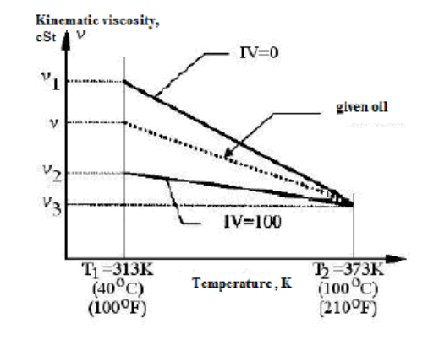


Indian Journal of Science and Technology
Year: 2023, Volume: 16, Issue: 4, Pages: 254-258
Original Article
Ioana Stanciu1*
1Faculty of Chemistry, Department of Physical Chemistry, University of Bucharest, 412 Elisabeta Blvd, 030018, Bucharest, Romania
*Corresponding Author
Email: [email protected]
Received Date:13 July 2022, Accepted Date:16 September 2022, Published Date:27 January 2023
Objectives: To determine the viscosity index of hydraulic oil by three methods. These methods are: the viscosity index determined by a mathematical relationship, using a calculation program and the graphic method. The study also intends to determine the viscosity-temperature coefficient for the hydraulic oil. Methods: To determine the kinematic viscosity of the hydraulic oil, we used a calculation formula that transforms the dynamic viscosity into kinetic viscosity knowing the density of the fluid. Thus, we determined the dynamic viscosity of the hydraulic oil with the Schott Ubbelohde viscometer at the temperatures of 40 and 100◦C. To determine the dynamic viscosity of hydraulic oil at 40◦C and 100◦C, we used a water bath. The dynamic viscosity thus obtained was transformed into the kinematic viscosity of the oil by dividing it by density. Findings: The lowest viscosity index of the hydraulic oil determined using the computer program is 101. The viscosity index of the hydraulic oil determined with relation (1) is 58% higher than using the computer program. The viscosity index determined by the graphic method is 50% higher than the one determined by the computer program. The viscositytemperature coefficient has a value of 0.8380. Novelty: Knowing the viscosity index of hydraulic oil is important for starting the engine at high temperatures and at low temperatures. At high temperatures, the oil chemically degrades and the molecules break down. The properties of hydraulic oils depend a lot on the way the hydraulic system works and the limits imposed on them in different conditions.
Keywords: Viscosity Index; Viscosity-Temperature Coefficient
© 2023 Stanciu. This is an open-access article distributed under the terms of the Creative Commons Attribution License, which permits unrestricted use, distribution, and reproduction in any medium, provided the original author and source are credited. Published By Indian Society for Education and Environment (iSee)
Subscribe now for latest articles and news.